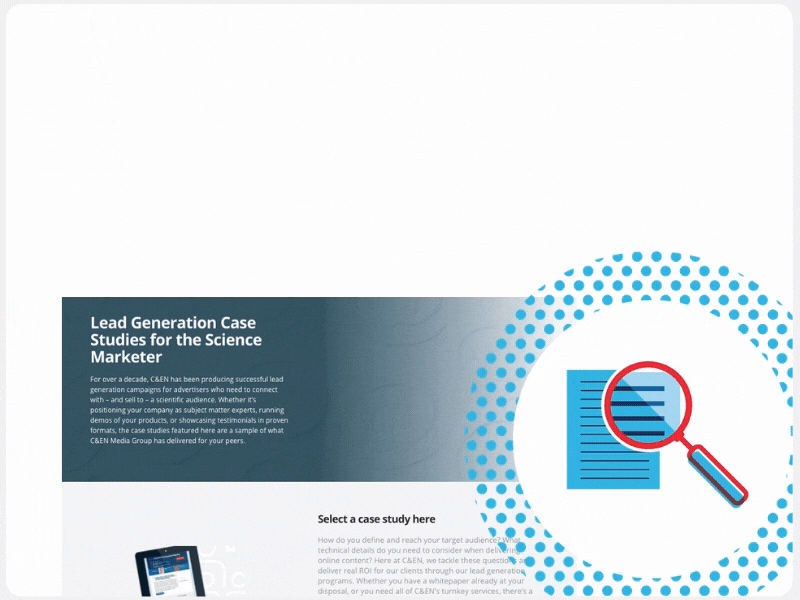When it comes to measuring content marketing ROI, it’s easy to gravitate towards traditional methods, which often include performance metrics such as sales and profits. But measuring campaign effectiveness goes beyond the money, especially because having a well-read piece of content or a successful blog post doesn’t guarantee that someone is going to go and make a purchase immediately.
It seems counterintuitive, but this is actually a good thing: It presents the opportunity to engage with stakeholders and target audiences through a variety of channels. And in the chemical industry, where purchasing timelines can be anywhere from months to years, this overarching strategy is a necessity.
Thus, in lieu of a purchase, moving external stakeholders – with their own unique needs and motivations – through various steps in the buyer’s journey is the next best thing.
Marketing with Purpose, Before and Beyond the Purchase
Because the buyer’s journey is rarely as simple as seeing an ad and making a purchase, especially in a B2B setting, there are multiple touchpoints along the way when leading a potential customer down the sales funnel. First and foremost, you must establish brand awareness so they know you exist. Next, you must capture and maintain their interest long enough for them to consider a product, and then finally, complete the purchase.
After a customer makes a purchase, there’s also an opportunity to build a lasting relationship and on-going support. This step is often neglected: Many brands offer up their partnership and customer service up as major value props, then fail to execute. While those that do often turn that one-time customer into a brand loyalist. Studies from C&EN and C&EN BrandLab have consistently shown buyers want to work with brands that make the time and effort to serve their needs well beyond a purchase.
When it comes to assessing the success of your content marketing, leveraging KPI’s beyond financial impact is a good way to understand where your potential customers are in the buyer’s journey. Are they spending a lot of time educating themselves, or are they leaving a page almost as quickly as they arrived? These are valuable insights to help you understand the impact your content is having and how it’s facilitating the buyer’s journey.
That’s all well and good and conceptually makes sense, but if you aren’t measuring increases in sales, how do you measure if your content is doing what you want it to?
Buyers want to work with brands that make the time and effort to serve their needs well beyond a purchase
Alternative KPIs: Get More for Your Money
Broadening the scope around how you measure success will unlock a world of potential, and better position these programs internally. Keeping in mind that the tangible impact of content marketing goes well beyond making a sale, many marketing teams are met with the challenge of defining what success means to their executive teams.
Luckily, there are an array of tools and metrics that can be leveraged to answer this question. Here are some ways to measure content performance, beyond just looking at purchases and profits.
Attracting More Qualified Leads
The better and more useful your content is to your target audience, the more qualified of an audience it will attract.
But what makes it useful?
Content that helps your audience solve the niche problems that they deal with on a daily basis. This type of content is self-selecting: Only your potential customers will be searching for answers. Therefore, the content you’re publishing can help act as a qualifying step for your leads. And the more qualified your leads are, the better chance you have of them making an eventual purchase.
So, how do you measure if your leads are qualified? Your sales team can be your best friend here: If anyone is a good judge of the quality of leads, it’s them. If you’re using a piece of content for lead generation, work with your sales team to estimate what percentage of the leads are qualified. Is your content attracting leads in the right roles and at the right companies? If not, it’s good to reevaluate your content strategy and who is actually reading it.
Once you know what percentage of your leads are qualified, you can work backwards using data from your analytics to find out how they became a lead. Use Multi-Channel Funnels reporting tools to see which pieces of content are guiding visitors down the path to conversion and what channels are driving conversion.
Increased Web Traffic
Web traffic is a vital element of brand awareness and engagement. An owned, earned or sponsored piece of content can help generate a new stream of referral traffic. Ashland Global used sponsored content and strategic audience insights to achieve a 2.13% click-through rate, which is well above industry standards, and drove significant traffic to their website.
Aside from click-through rate, taking a look at your web analytics allows you to follow the visitor journey, and can also provide metrics as to how many visitors are new (or have visited before), time spent on each page, what their bounce rate is, and how many additional pages they looked at.
How can these stats help prove ROI?
Create a visual and map out the above metrics to understand engagement specifically to a piece of content or to a stage in the buyer’s journey. Prove ROI on your content marketing by highlighting these increases as vital to moving your target audience down the funnel and pitch a follow-up campaign as the next step in reaching these new visitors. You can use tools like AdRoll retargeting to re-engage these visitors with a special offer, subscription to a newsletter, or other relevant materials that support where they stand in the buyer’s journey.
Raising Awareness and Creating Positive Brand Sentiment
How do you measure qualitative metrics like how potential buyers “feel” about the brand though? These softer measures often get written off as unimportant due to their subjectivity, but they are huge drivers in purchasing decisions, even amongst data-driven scientists.
Surveys are a simple and effective way to measure the sentiment of potential customers toward your brand. In the case of Ashland, 77% of readers surveyed said they learned something new about the company through their branded content campaign with C&EN BrandLab, helping to prove that the content created a positive feeling about the brand. Using surveys, you can ask very direct questions about a brand or specific topic before your campaign runs, and then again after it concludes to judge how the content could have changed readers views, – and if will affect their future purchasing decisions.
By quantifying the results of your surveys, you can get a good sense of content success. The more positively a reader feels about your brand, the more likely they are to make a downstream purchase. In the case of Ashland, 49% of respondents said reading the company’s sponsored content increased the odds of them making a purchase.
Robust content campaigns, either branded with a publisher or done on your own, can have indirect effects, such as increases in branded and unbranded searchers looking for information specifically about your company (branded) or general solutions (unbranded). All of this can equate to increased website traffic, more leads and potentially more purchases.
Tools like SEMRush, Google Search Console and Google Trends can help provide definitive data on the number of branded or unbranded search terms that occurs in a period of time. By comparing the total number of monthly keyword searches before and after a content campaign, you can get a good sense for the impact your campaign has had on brand awareness.
Re-Thinking Content Marketing ROI and How it Gives a Competitive Edge
In the world of chemistry, the landscape is competitive, fast-paced, and ever-evolving. To stand out, you’ll want to develop a content marketing strategy that promotes your key differentiators to help build confidence and trust between your audience and your brand. Paired with qualified referral traffic and a robust social media presence, learning to master content marketing, over the more traditional product marketing, can give you an edge over your competitors.
When taking into consideration the vast array of ways that content marketing can impact your primary business objectives, its once-obscure strategic value becomes crystal clear. It is not just about meeting sales goals, but putting yourself in front of new potential customers, establishing expertise and a positive reputation with them, and then encouraging them to consider and pursue engagement. Through strategic planning, you can make these steps measurable, giving you key metrics, that can go beyond just products or services purchased, to understand your audience and prove campaign success.
At the very least, a successful content marketing campaign will make establishing confidence in your company, its leadership, and its offerings much simpler. Content marketing is still notoriously challenging, but here’s a good rule of thumb to keep in mind: good content is of high quality, consistent, and genuinely insightful. The process itself may not be simple, but the various KPIs outlined here speak for themselves when it comes to the rapport it builds with target audiences and the difference it makes when it comes to decision making.



















